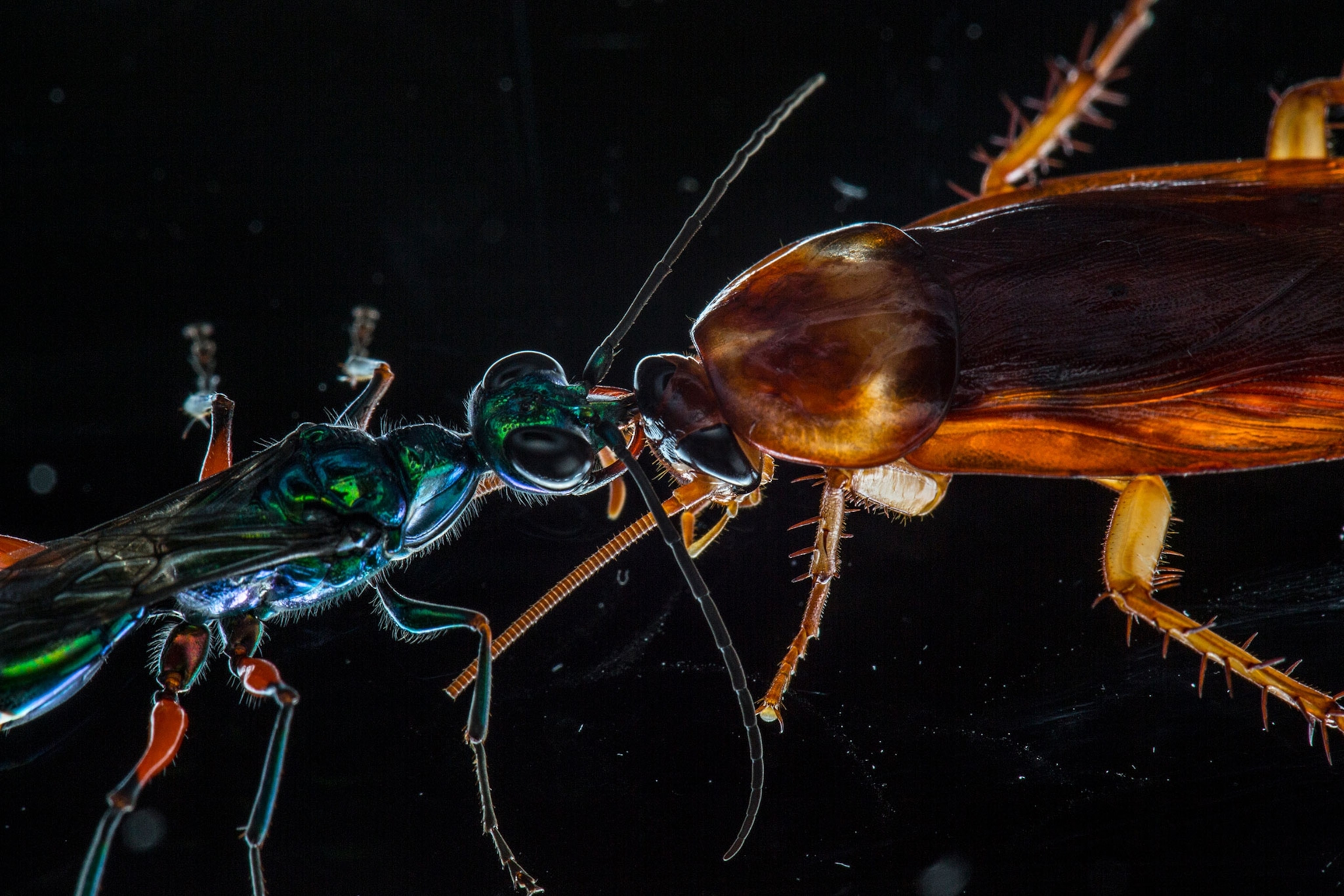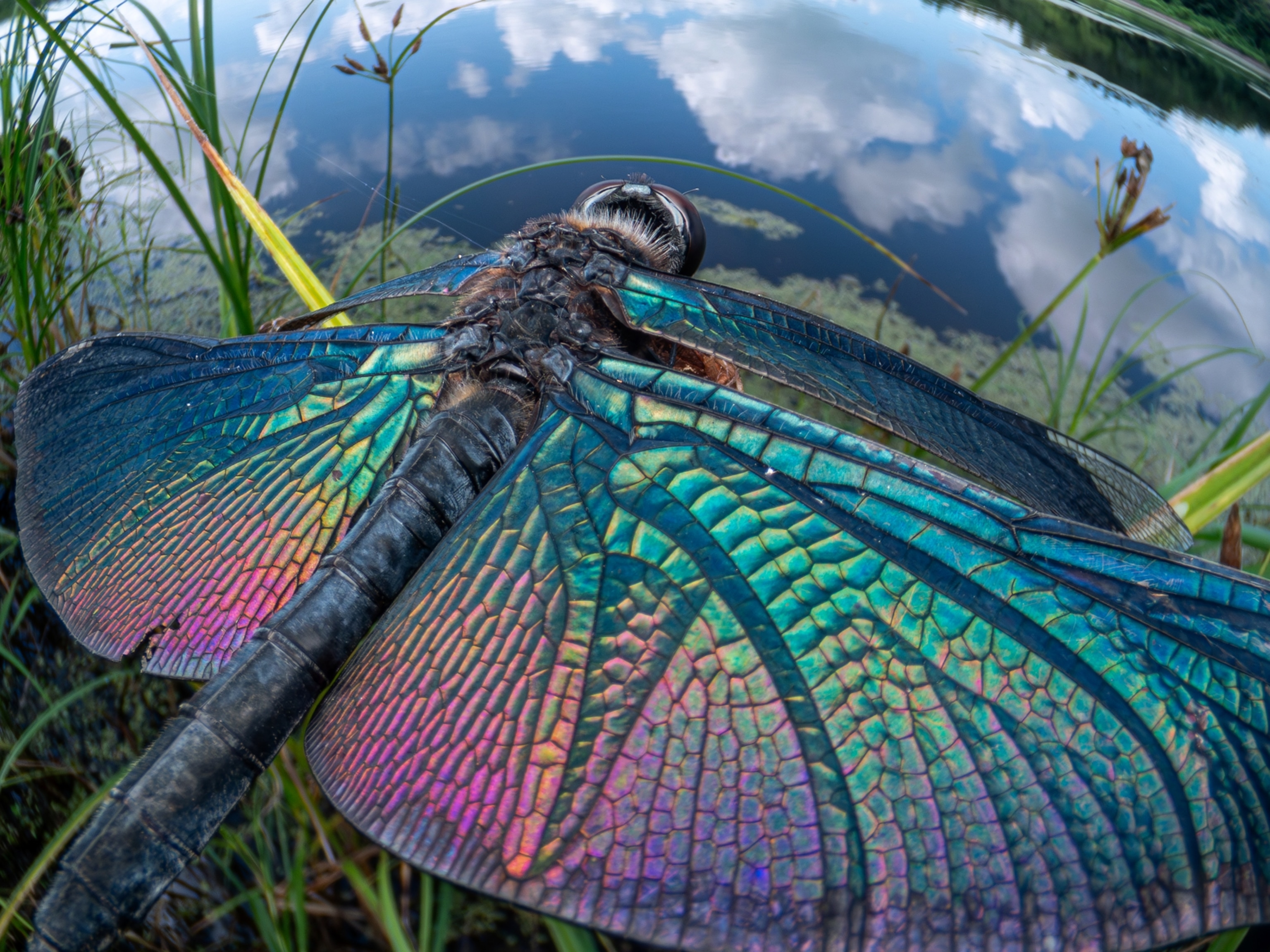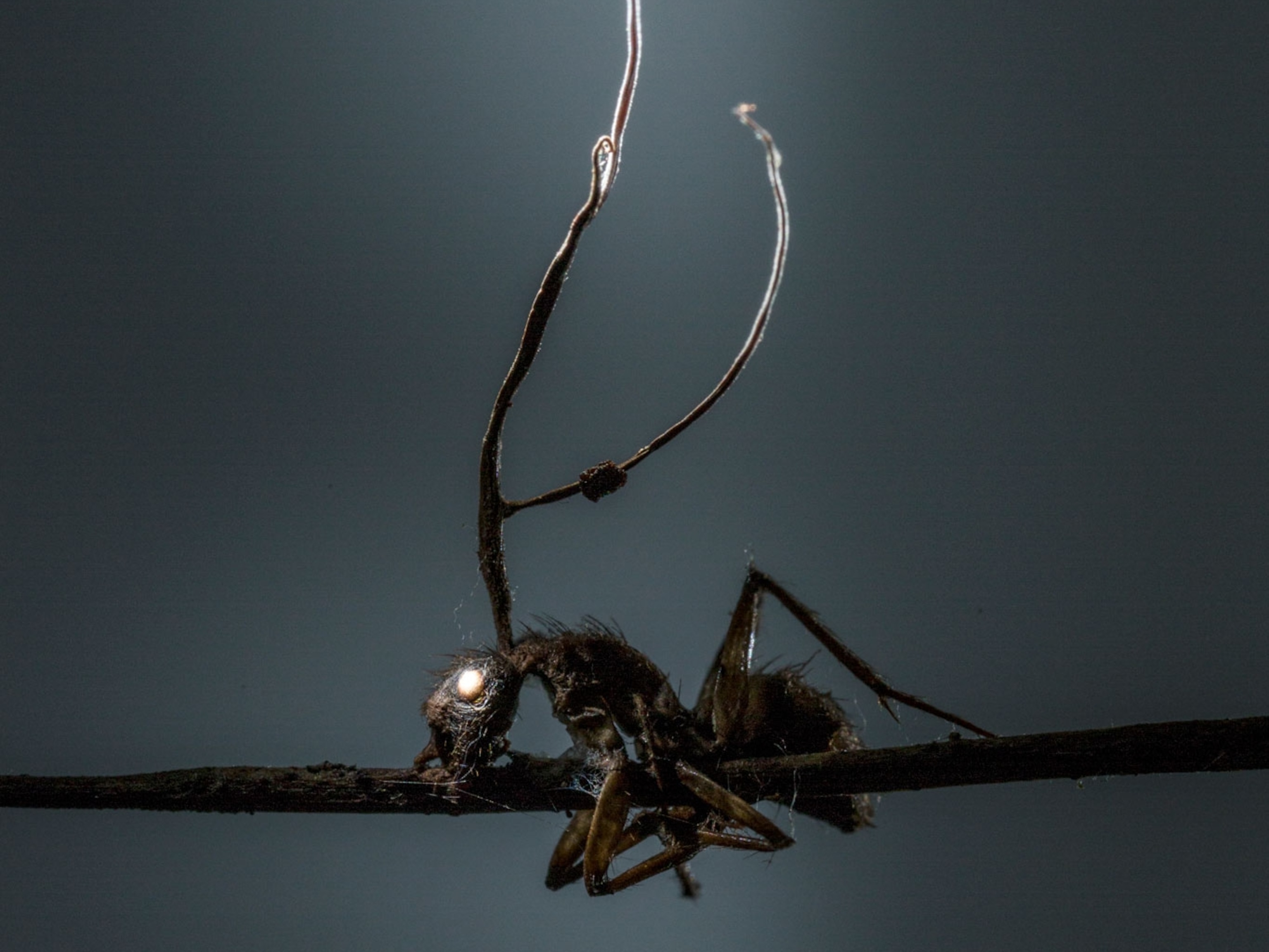
The Mind-controlling Molecules of Wasp Venom Could Help Future Parkinson's Research
Down the line, investigations into the components that make up parasitic wasp venom could have implications for future research.
An emerald cockroach wasp (Ampulex compressa) can control the minds of roaches with a sting of its venom.
When looking for a host, one of these parasitic wasps will start by stinging the midsection of a roach, and their toxic venom will paralyze the animal's front legs for five minutes. With a secondary strike, the wasp will go directly for the brain, where the sting will induce an intense 30-minute period of vigorous grooming. After that, the roach falls into a lethargic state—called hypokinesia—in which it can't move by its own will.
"They're not paralyzed," says Michael Adams, a professor of entomology and neuroscience at the University of California, Riverside. "The animal can walk if it's led by the wasp."
The wasp will then lead its hypokinesic victim by the antennae into a burrow. There, it will lay an egg inside its prey, which will grow in the cockroach for the next seven to 10 days. Finally, the larva will burst out, eating the cockroach from the inside out. (Related: "See What's Controlling These Zombie Ants")
For years, researchers have been working to use natural venom for good. Specifically, one team, led by Adams, is investigating the venom of parasitic wasps to see how it could be used to guide future research in Parkinson's disease. Their paper was published February 7 by the American Chemical Society.
Parasites & Parkinson's
As a neurogenerative disorder, Parkinson's disease causes brain cells to slowly die. Specifically, it targets neurons that produce dopamine, effectively restricting the chemical.
Symptoms vary, but the disease can cause body movements to slow down (called bradykinesia), as well as trigger tremors, limb rigidity, and balance problems. The causes of Parkinson's are currently unknown, and while there is no cure, patients have been treated with medications and surgery.
The researchers milked wasps of their venom and analyzed the toxin's components. They found that parasitic wasp venom contains a new family of peptides (which they named ampulexins) that could be crucial in controlling the minds of cockroaches. It could also help with future Parkinson's research.
The venom could also be involved in tampering with the dopamine pathway in roaches, similar to how Parkinson's disease seems to disrupt dopamine production in patients.
"Some types of molecules could be useful in mitigating these Parkinsonism-like symptoms," Adams says. "We're still trying to understand the basic mechanism."
Interestingly enough, if the wasp doesn't lay an egg inside its host, then the cockroach can recover in days. The roach's zombie-like state lasts about the same amount of time it takes for the wasp larva to hatch. (Read: "Meet 5 'Zombie' Parasites That Mind-Control Their Hosts")
"If we don't allow the wasp to lay an egg, [the cockroach] recovers in about a week and it seems to be quite normal," Adams says.
Currently, the researchers are finishing up a second paper detailing more aspects of the venom. Research will continue in the coming years, and it could involve figuring out more about the cells that ampulexin targets. Down the line, animal models could be developed.
"Parasitic wasps have these crazy venomous effects," says Ellen Martinson, a postdoctoral research associate in the University of Georgia's department of entomology. Martinson was not involved in the study, but she's excited about the potential it shows.
The Timeline of Medicine
Other natural toxins are being looked into as possible cures for human diseases. The venom of pit vipers, for example, is a hemotoxin, which destroys red blood cells.
Scientists have already been able to identify a short sequence of amino acids in this venom that could reduce the number of cell deaths associated with Parkinson's disease. (Watch: "To Fight Opioid Addiction, Scientists See Promise in Sea Snail Venom")
But new medications can by no means be developed overnight. It can take at least 10 years to create a medication out of a natural toxin. Extensive research and tests have to happen before scientists can even start with preliminary human trials.
"We're mostly just now in the exploratory phase," Martinson says. "Now, it's just kind of a treasure hunt that we can build on over time."




